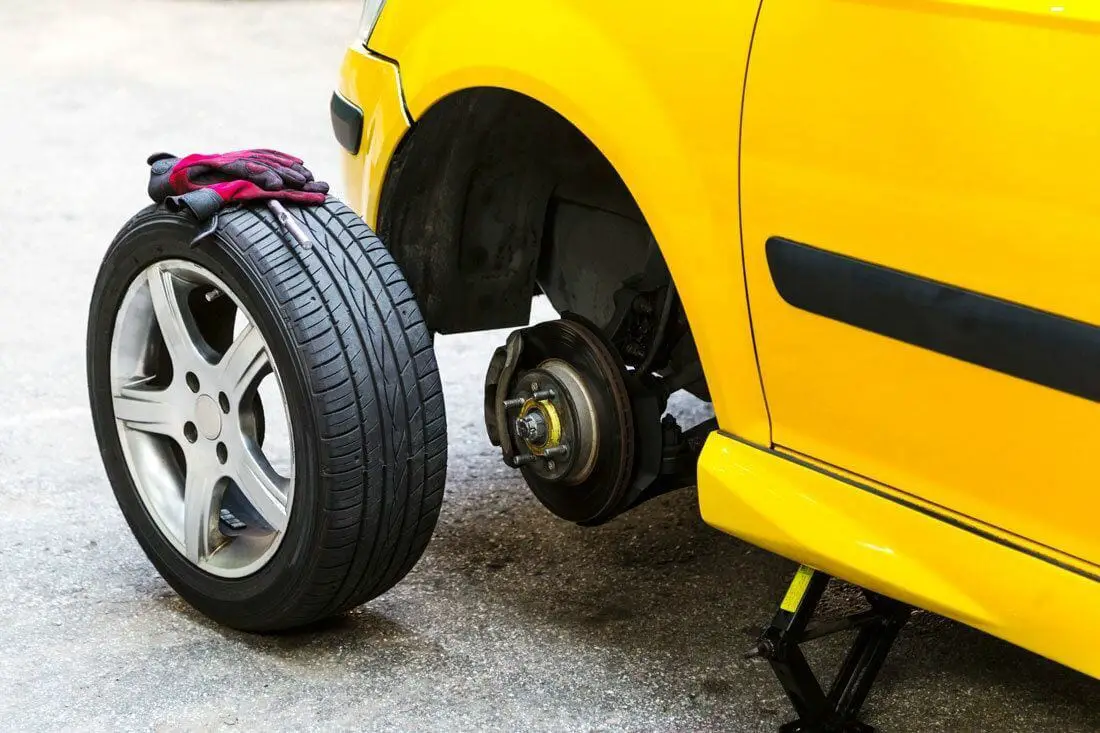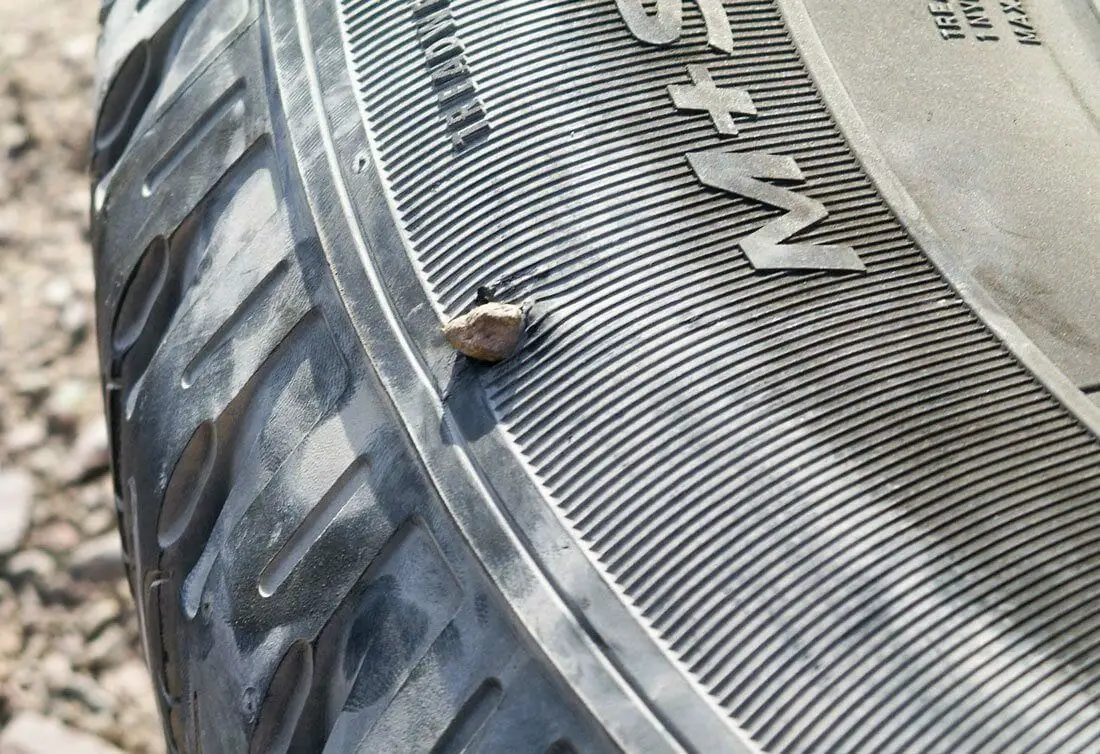How To Fix a Hole in a Tire
Every driver faces the challenge of tire damages one way or the other. Injury may result from punctures, cuts, potholes, and other tire damaging items.
However, there is some basic knowledge one should imbibe as a car owner to effectively handle and manage one's car. In this article, you will learn how to fix a hole in a tire and other benefits for adequate car care and management.
When can a Tire be Replaced?
To discern, when a tire needs to be replaced, one has to take into consideration the type, size, and area of damage. However, tires can be replaced in situations like:
Punctured Beyond Tread Limit
A tire that is cut or punctured beyond the tread area and extends to the sidewall or shoulder region, it is safe and better to buy a new tire.
1. Punctured Above ¼ of Inches
Punctures or cuts that go beyond one quarter(¼) inches or 6mm in diameter are considered to be too large and are considered to be unsafe.
2. Punctures above 16" apart
Punctures that are less than 16" apart require you to get a new tire as repairing them may be inefficient and unsafe because of the closeness.
3. Worn out Tires
When tires have worn out to the tread wear out limit, which is about 2/32 inch, the tires should be replaced.
4. Overlap Repairs
In situations whereby new damage occurs in a previously repaired region, it is safe to get a new tire because any repair done will be ineffective, which is unsafe.
Repairable Tire
You can repair your tire under any of the following conditions.
1. During Punctures
Patching up a punctured - whether by nails or other sharp objects- the tire is possible if the damage occurs in the tread region and doesn't go beyond one quarter(¼) of a rim diameter in inches or 6mm.
2. More than one Punctures
In the case of several punctures or cuts, repairs can be done as long as the cuts are 16 inches apart.
3. When Repairs do not Overlap
Repairs can be done on a tire if the repairs do not overlap as overlapped repairs are not valid because of worn out or less durable tread regions, which can be ineffective.
4. Cuts that occur in the Tread Region
Punctures or cut around the tread region is safe to repair. However, cuts on the sidewall or shoulder region are unrepairable.

Tire Repair Process
Having a puncture in a repairable area of the tire means it can be fixed. Here is a step by step process on how to fix a hole in a tire.
- Find out if your tire is repairable or not.
- Discover the area with the puncture or injury and highlight it. You can highlight with a tire crayon or use an ink marker but ensure it is visible enough.
- Take out the penetrating material and insert an awl into the hole to know the degree of penetration.
- Wipe and clean the injury region with water(you can add soap if you wish) and a scraper.
- Pierce through the damaged hole with a drill-on low speed- following the line of the penetration from the inner liner.
- Take out the plug stem and fix it to the wire puller. Cover the plug with a fast dry cement.
- Force the wire puller through the damaged area from the inner part of the tire. Make sure the cement on the plugs still wet. Drag the wire and pull slowly and steadily until 1⁄2inch of the gray rubber attached to the cap is showing outside the tire.
- With the use of a knife or cutter, cut the plug on the inner part of the tire ⅛ inches from the inner surface. Make sure you don't stretch the plug while cutting.
- Ensure the bead arrow of the repair area is directed towards the bead. Then put the center of the right side of the repair unit on the injured part. Highlight the area some ½ inches bigger than the repairing part.
- With the use of a buffer and buffing rasp, buff the plug and the highlighted inner line region. Ensure to use a low-speed buffer to avoid buffing through the inner layer of the tire.
- Remove the dust from buffing. You could use a vacuum then apply a fluid to clean the area, scrap and allow it to dry.
- Distribute fast-drying cement evenly on the buffed region and leave to dry but still sticky. Do not use any artificial drying tool as it may affect the process.
- When completely dry, remove some poly backing, but make sure to press the repair unit in place. Then stitch the unit starting from the center to the edges.
- Add sealer to the repair region and other over the buffed area. Then apply a sealer to the bead of the tire to help tighten it and to avoid air loss during inflation.
- After inflating, cut any excess plug stem around the outer tread region. Your tire is ready for use.

Non-repairable Tires
Tires are non-repairable of the have any of the following defects.
1. Cut outside the Tread Area
Tires punctured outside the repairable area cannot be repaired and should be changed — the repairable area in the middle of the crown region of the tire. Affecting the sidewall means it needs replacing as the sidewall cannot be repaired.
2. Deep Puncture
If the cut or puncture the beyond the recommended depth, which is ¼ or 6mm, then the tire is non-repairable as this can disrupt the functionality of the car and compromise safety.
3. Presence of Bubbles
If there is the presence of a bubble or a bulge on the sidewall of your tire, it is damaged because they are non-repairable. Bubbles or burger results from bumps, potholes, or other road impacts.

Puncture Outside Repair Area
The repairable area of a tire starts at about ½" from the tread edge where the steel belt is found. Areas beyond the steel belt are the shoulder and sidewall regions. The shoulder and sidewall regions are outside the repair area, and any puncture that occurs there cannot be repaired, and the tire needs to be changed.
Industry Standard for Tire Repair
There are various standards made by tire agencies like the U.S. Tire Manufacturers Association (USTMA) and Tire Industry Association (TIA). They include:
For the USTMA:
- According to USTMÀ, tire repair cannot overlap themselves. Either a rubber stem or plug should be used to cover the puncture or cut; after that, an automobile patch is used to cover the inner layer.
- Not all car tires should undergo repair. To know the repairability or limit of a car, consult a professional, or get recommendations from the manufacturer.
- Do not fix a tire that has been repaired wrongly before; such a tire must be scrapped.
- Do not repair a tire using only a plug or a patch as they are ineffective.
- Do not repair your tire on the wheel or repair turning the tire inside-out.
For the TIA:
- To perform a practical repair, remove the tire from the wheel, this will give room to examine the inside. Then take out the damaged item, cover the hole with rubber, and seal the inner liner using a repair unit.
- Using only a plug or a patch to repair a tire is unacceptable. This is because the plug will not totally cover the inner part, and the void will not completely cover the hole caused by the sharp object, thereby giving room for water to penetrate the tire, which can result in rusting of the rim.
- Avoid using sealants or urgent inflator that has sealants as they are not valid for lasting solutions for flat tires.
- Punctured tires should be repaired if the puncture is around the tread region. Any puncture on the sidewall or shoulder region of the tire cannot be repaired.
- Tires with overlapping punctures or punctures opposite each other cannot be repaired but scrapped.
- Do not fix tires with injuries greater than ¼ inches or 6mm in diameter.
How to Patch/Plug Hole in Tire in LESS THAN 5 Minutes - Fix a Flat Tire
How To Fix a Hole in a Tire FAQs
Is it possible to replace one tire?
Yes. But only if the other tires have not reached the possible depth that is required to change them.
How long does a plugged tire last?
Without further puncture, a plugged tire can be used for up to 6 to 10 years.
How much is the cost of repairing a tire?
Fixing a punctured tire ranges from 10 to 20 dollars, this price also covers patching of the tire. However, some dealers will help you fix your tires for free if you buy tires from them.
Is it okay to drive with a nail in my car?
It depends, if the nail has not punctured deep, you can drive some short distance but make sure to get it fixed as soon as possible.
Can I pull nails out of my tire?
You can if you have a spare tire ready. But if otherwise, leave the nail in until you take the tire to a repairer for full servicing.
Final words and recommendations
Having understood the basis of car damages and injuries, start implementing this knowledge, and enjoy a happy and joyous riding experience.
Sources:


